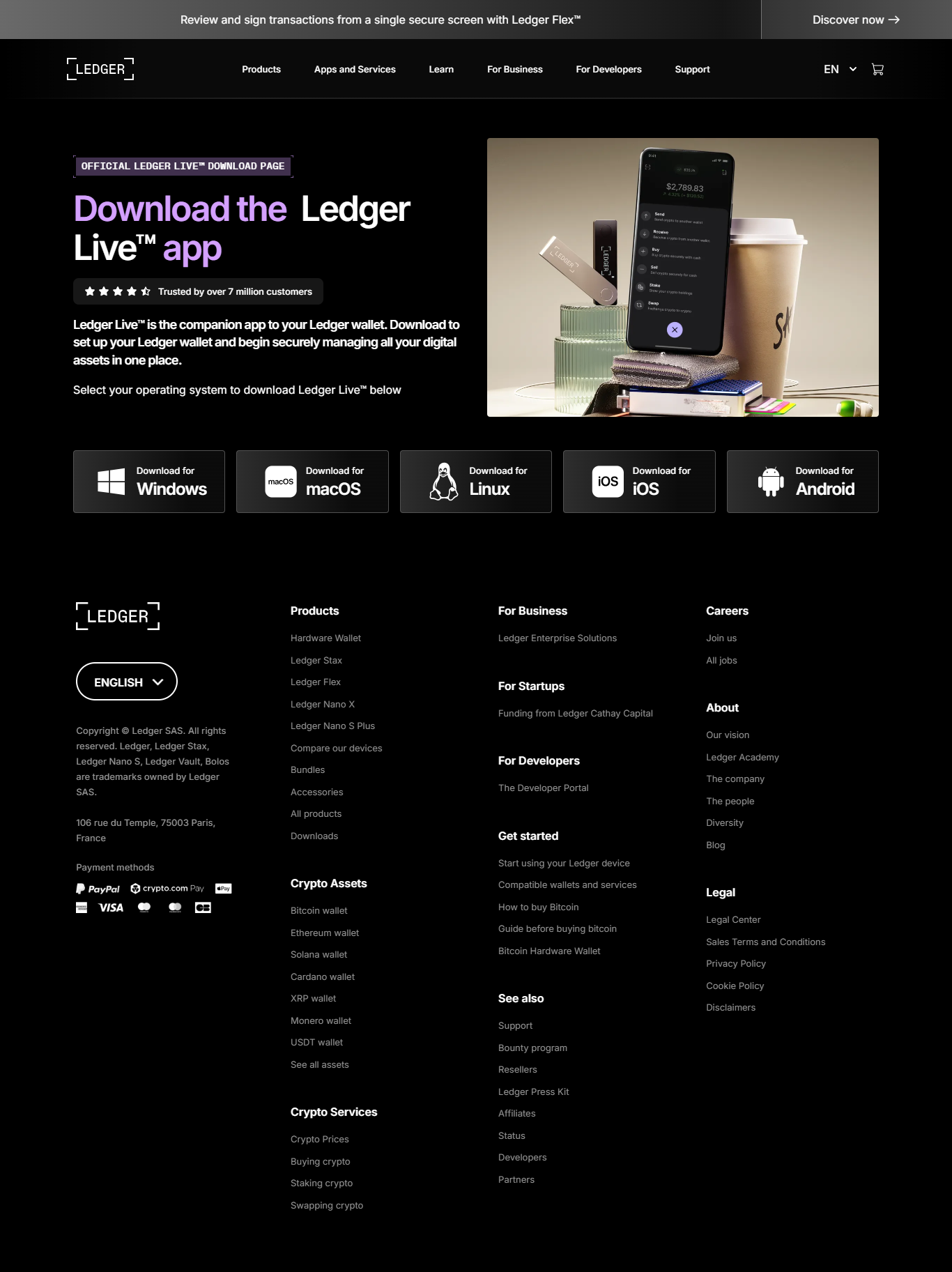
Welcome to Ledger Start: Secure Your Crypto Journey
Embarking on your cryptocurrency journey can feel daunting, especially given the ever-increasing risks associated with digital assets. The importance of security cannot be overstated, and with Ledger, you hold the key to protecting your investments. Ledger hardware wallets combine cutting-edge security technology with an intuitive user experience, empowering both beginners and seasoned crypto holders to safeguard their assets effectively.
This comprehensive guide covers everything you need to know about setting up and optimizing your Ledger device. By following these steps, you will ensure your assets are protected from theft, hacking, and digital fraud, while maintaining complete ownership and control.
What Is Ledger?
Ledger is a leader in hardware wallet manufacturing, specializing in securing cryptocurrency private keys offline. This physical separation—the hardware wallet—makes it significantly harder for malicious actors to compromise your funds compared to software wallets or exchange custodians.
Ledger hardware wallets interface effortlessly with Ledger Live, an application that manages accounts, transactions, and device maintenance. Together, they create a secure ecosystem that supports thousands of cryptocurrencies including Bitcoin, Ethereum, and many tokens from the decentralized finance (DeFi) space.
Comprehensive Guide to Ledger Wallet Setup
Setting up a Ledger wallet properly is essential for maximum security. Below is a detailed step-by-step process ensuring you follow best practices from unboxing to functioning setup.
- Inspect Your Package: Begin by verifying the integrity of your Ledger device's packaging. It should be sealed and free from signs of tampering or damage, as Ledger takes efforts to ensure products reach you intact.
- Download and Install Ledger Live: Use only the official Ledger website to download Ledger Live. This ensures you receive authentic software without risk of malware infection.
- Power On and Initialize the Device: Connect your Ledger wallet to a trusted computer or mobile device using the provided USB cable or Bluetooth connectivity. When prompted, set a PIN code directly on the device; this prevents unauthorized physical access.
- Secure Your Recovery Phrase: Your device will generate a 24-word recovery phrase. It is critical to write down this phrase carefully on the supplied recovery sheets and store them offline in a secure location. This phrase is your only backup and can restore your wallet if your device is lost or damaged.
- Verify Recovery Phrase: The device will prompt you to confirm words from your recovery phrase. This step verifies that you have stored it accurately, a vital step to prevent permanent loss of access.
- Firmware and App Updates: Before using your wallet for transactions, ensure that both your device firmware and Ledger Live software are updated to the latest versions, benefiting from improved features and security patches.
- Install Cryptocurrency Apps: Ledger devices support multiple cryptocurrencies via specialized applications. Using Ledger Live’s Manager feature, install the apps corresponding to the assets you wish to hold.
- Create and Manage Wallets: Within Ledger Live, create accounts linked to your installed apps. You can then view balances, initiate transfers, and monitor transaction history securely.
Important: Never share your recovery phrase with anyone, and avoid storing it in digital formats. This phrase is the master key for all your crypto holdings.
Maintaining Security Over Time
To keep your assets safe after setup, it’s essential to adhere to ongoing best practices, including:
- Regularly monitor and install updates for Ledger Live and device firmware.
- Always verify transaction details on the device screen before approving any transfers.
- Use strong, unique PINs and consider additional protection layers like passphrases.
- Be vigilant against phishing attempts. Verify URLs and only download Ledger software from official sources.
- Use hardware wallets in secure and trusted environments and avoid public or shared computers when performing sensitive operations.
Exploring Ledger’s Expanding Ecosystem
Ledger’s ecosystem extends beyond just hardware wallets and Ledger Live. Integration with third-party wallets and decentralized applications (DApps) allows users to participate confidently in Web3, decentralized finance, and the growing NFT markets.
This ecosystem includes compatibility with popular wallets like MetaMask, allowing hardware wallet-backed authentication and transaction signing, ensuring the highest security without compromising usability.
Using Ledger for Various Crypto Assets
Ledger devices support more than 1,800 cryptocurrencies, covering a vast spectrum from Bitcoin and Ethereum to emerging altcoins and tokens. This flexibility allows users to diversify portfolios while enjoying security efficiencies.
Advanced Ledger Features and Tips
For crypto enthusiasts or those holding significant assets, consider:
- Using passphrase protection, which adds an additional custom word to your recovery phrase, effectively creating hidden wallets.
- Employing multisignature wallets for joint authorization and enhanced security.
- Keeping backups of recovery phrases in multiple secure physical locations.
- Engaging with Ledger’s NFT support and DeFi tools securely through compatible apps.
Troubleshooting Common Issues
- Ledger device not connecting: Check your USB cable and try different ports. Ensure Ledger Live is up to date.
- Lost device: Use your recovery phrase on a new Ledger device or compatible wallet.
- Multiple cryptocurrency management: Install respective apps for each crypto supported by your Ledger device.
Frequently Asked Questions (FAQs)
Can I use the Ledger wallet with a mobile device?
Yes. Ledger Nano X and some other devices offer Bluetooth connectivity and support Ledger Live mobile app for iOS and Android.
What happens if I forget my PIN?
Your device will reset, but you can restore your wallet using your recovery phrase.
Is Ledger safe for long-term crypto storage?
Yes. Ledger is designed to provide long-term secure storage by keeping keys offline and requiring physical confirmation for each operation.
Start Your Secure Crypto Journey with Ledger
Digital asset security begins with hardware wallets like Ledger, which empowers you with self-custody and control. By following this detailed guide, you've taken the first important step toward safeguarding your crypto investments.
For more detailed tutorials, firmware updates, and support, regularly visit the official Ledger.com/start website.
Disclaimer: This guide is for informational purposes and is not financial advice. Always purchase Ledger hardware wallets from official channels and keep your recovery phrase private.